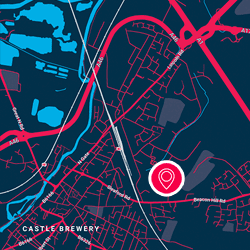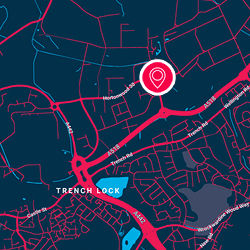BLOG
Why Charities Cannot Afford to Ignore Digitalisation
Why Charities Cannot Afford to Ignore Digitalisation
With online donations accounting for £2.4 billion in donations from the UK annually, the way in which we interact with charities has changed. This article proposes how and why charities must embrace digital transformation to realise their potential.
This is the information age. It has never been easier to access global news. It’s possible to type anything into a search engine and see the latest trends, gossips and of course, hardships from around the globe. Because of the accessibility of the Internet of Things, and pretty much anything that interacts with a network, we can live our lives connected to the events of the world.

Digital Marketing
Having front-facing, omni-channeled marketing is imperative for a successful charity campaign. Nowadays, it’s not only writing that we’re exposed to: it’s videos, audios, interviews, photographs. Just as some people learn best in visual, aural and kinesthetic mediums, the way we ingest news is also variable. Some people are deeply moved with language, while others are moved with photographs and videos. By utilizing the platforms available, charities can get their message across with increasing clarity.
Cards not Cash
Less people are carrying cash in their pockets. The card payment has become the transaction of choice. This means that contributing to buckets or stalls has become old fashioned, we’re not as dependent on physical money as we were in the past.
The government, in its call for evidence on cash and digital payments in the new economy, predicted that by 2026 cash payments will account for just 21 per cent of all financial transactions.
The UK is leading Europe for contactless payments with 2/3 of the populace using contactless cards as a means of purchase. 1/4 of the population now use contactless via mobile. Charities will need to respond with technology that accommodates contactless or will miss out on would-be donations.
Personal Causes
The internet has given rise to personal fundraising. Online sites such as JustGiving make it very easy for personal campaigns to be shared and brought to attention. Just as people are more likely to give money to causes they have an emotional connection with, it’s also true that we are more likely to give money to friends, family and acquaintances. We can call this the digitalisation of knocking on your neighbour’s front door. Charities need to reach out and support members of the community that are raising money for them and give incentives for others to do so.
Social Media
Trends like #GivingTuesday have inspired a generation of volunteers and donators. By staying relevant on social media, people are more likely to donate. If charities are not optimising social media, they are missing a vital trick.
Monthly Donations
By utilizing digital methods, charities can request a monthly payment. This is more effective if there is an incentive reward scheme, where with the use of forums or updates donators can see where the money is going, increasing loyalty and a sense of community.
In Conclusion
Charities must continue to innovate and invest in digital transformation to maintain influencer status. It’s not enough to rely on old tactics and the community to raise money for them. By investing in digital solutions, charities have a greater reach and potential to get their message out there.

Timico
We deliver Connectivity, UC&C, Cloud & Hosting, Security and IT Managed Service Solutions to our customers, through Service Operations based in Newark, Winnersh, Telford and London.










